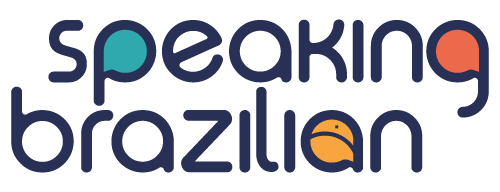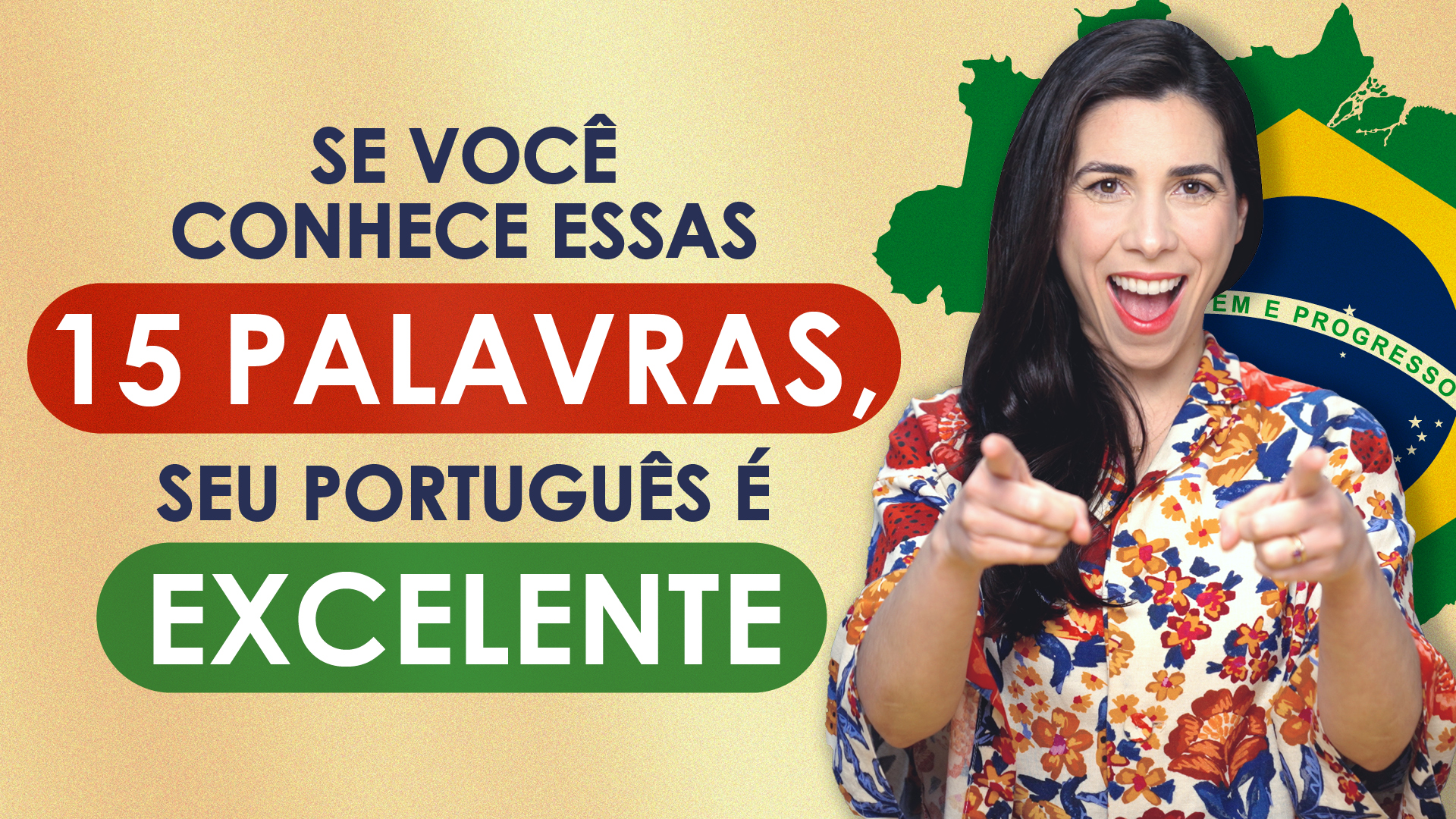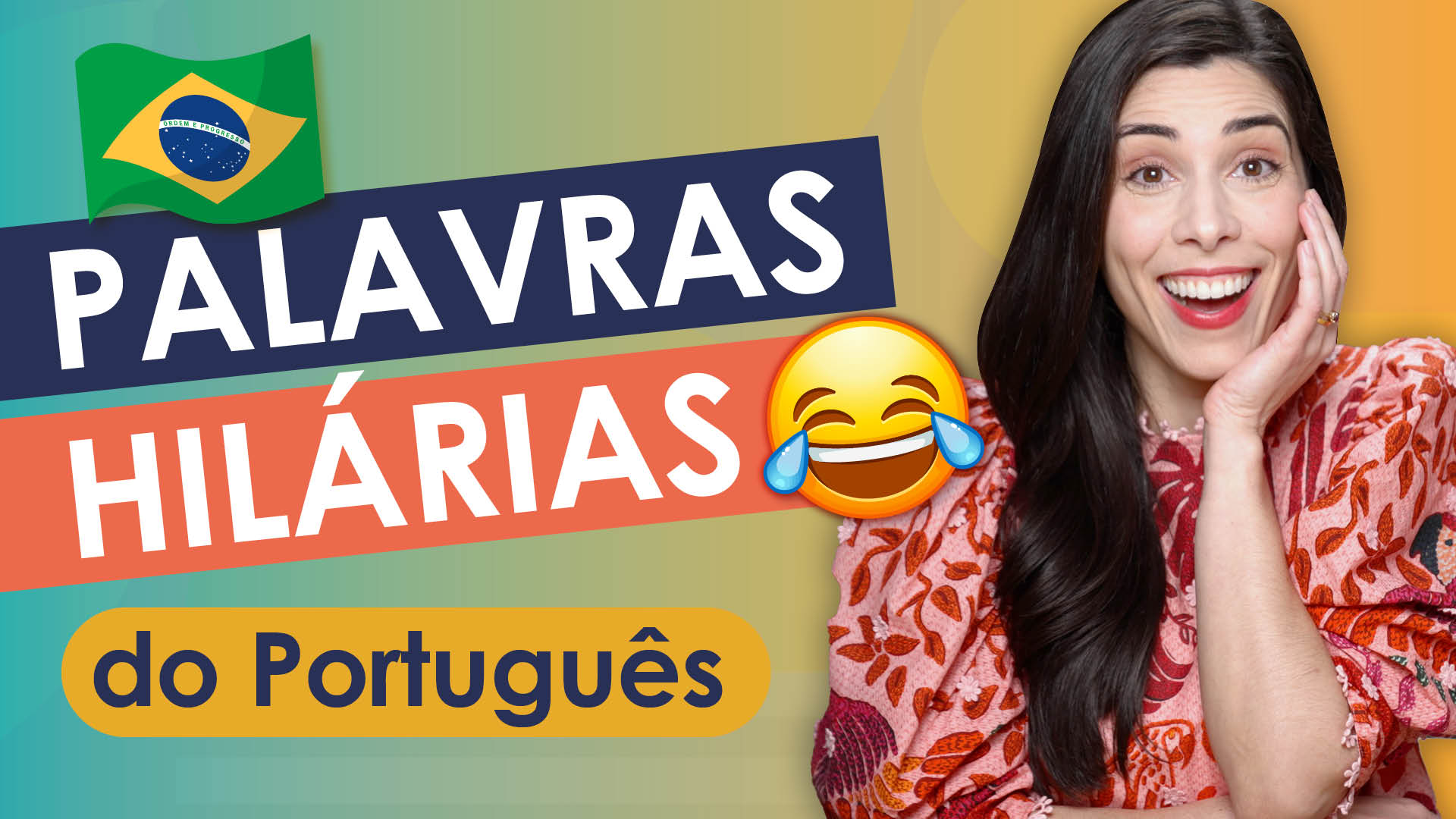*Read translation into English at the end 🙂
Transcription of the video in Portuguese:
1. Trancoso
Eu estou em Trancoso, na Bahia. Trancoso é uma cidadezinha fofa que fica perto de Porto Seguro, no sul da Bahia, na região nordeste do Brasil. Neste vídeo, eu vou mostrar pra vocês um pouco sobre essa cidade e sobre as comidas típicas da região. Vamos lá?
Estamos agora indo em direção ao Quadrado, que é a região central aqui de Trancoso.
Estamos chegando aqui no Quadrado, logo em frente à igrejinha de Trancoso.
– “Uma água, irmão? Um coquinho gelado pra esposa?”
– “É duas por cinco, a água mineral”.
Esta igrejinha é cartão postal aqui de Trancoso. Sempre tem gente tirando foto aqui, na frente da igreja.
Ali atrás, tem uma vista bonita, eu vou lá mostrar pra vocês.
Olha que linda a vista daqui de cima.
Logo aqui na frente tem a praia chamada Nativos, e ali tem um rio que deságua dentro do mar.
Essa região mais alta, onde eu estou agora é chamada falésia. É uma região causada pela erosão do mar e nos permite ter esta vista linda que nós temos aqui, com uma região bem mais elevada.
Trancoso, antigamente era uma cidadezinha, um vilarejo de pescadores, e hoje em dia, é um ponto turístico visitado por milhares de pessoas de todo o mundo. Morar na cidade hoje, em Trancoso, é caríssimo. Cada casinha aqui nessa região do Quadrado custa milhões de reais, o que é um valor muito alto pra essa região aqui na Bahia.
Eu vou ver se eu encontro alguém aqui no centrinho que possa falar um pouquinho pra mim sobre a cidade de Trancoso, porque eu não sei muito, não conheço muito da história daqui.
Bruna: O quadrado, antigamente, era da igrejinha pra frente. Pra trás era tudo cemitério. Tiraram os restos mortais, então tiraram o cemitério pra ali, então virou um retângulo.
O Quadrado forma por quê? Igrejinha com casinha uma do lado da outra forma um quadrado.
Essa igreja aqui, ela foi a segunda igreja construída no Brasil. Ela é de 1586, tem 430 anos. Casa gente do mundo inteiro.
Pra nativo casar aí, é 40 mil reais. A gente, que somos moradores.
Virginia: Você é daqui?
Bruna: Sou daqui. Nascida e criada.
Virginia: Qual é o seu nome?
Bruna: Bruna.
Virginia: Muito Prazer, Bruna.
Bruna: Prazer.
Aqui, o pessoal está jogando bola. Este é o jogo mais tradicional aqui do Brasil. Jogar futebol descalço e sem camisa. É sempre assim, final da tarde, depois do trabalho ou da escola, é hora de jogar futebol.
Essa é a rua principal aqui do Quadrado. Tem vários restaurantes com comida típica, vários vendedores ambulantes. É um lugar muito legal pra passear.
Olha que bonitinhas essas casinhas coloridas aqui.
2. Arraial d’Ajuda
Hoje, é o nosso segundo dia em Trancoso. Hoje amanheceu chovendo, e está meio nublado, então nós decidimos pegar o carro e sair pra passear pela região, talvez ver algumas outras praias e alguns outros vilarejos aqui dessa região.
Estradinha de terra aqui em Trancoso.
Estamos chegando em Arraial d’Ajuda, que é um distrito de Porto Seguro. Fica entre o centro de Porto Seguro e Trancoso. É uma cidadezinha super bonitinha com muitas praias bonitas.
Estamos caminhando em uma região central agora de Arraial d’Ajuda. Super bonitinho aqui.
Estou aqui na barraquinha da Marlene, que está fazendo acarajé. Acarajé é uma das comidas mais típicas aqui da Bahia.
– De que que é feito essa massa?
– Feijão.
– Feijão fradinho.
– E aí vocês fritam o bolinho?
Frita o bolinho no azeite de dendê, aí recheia com vatapá, que é o creme de camarão seco, farinha de rosca ou farinha de trigo, ou pão; bobó de camarão, que é o camarão com mandioca; aí tem o caruru, que é o creme de quiabo; o vinagrete, que é tomate com salsinha e cebola; e o camarão seco, que vai por cima.
Olha que bonito, gente! Essa cor alaranjada é do azeite de dendê, que é muito típico aqui dessa região. Dá uma cor bonita e um sabor incrível também.
Que bonito! Que lindo! Olha! Vamos provar. Está quente porque acabou de sair do fogo.
Muito bom! Se você vier à Bahia, você precisa comer acarajé.
É isso por hoje, pessoal! Eu espero que você tenha gostado desse vídeo. E eu gostaria de saber, você já esteve aqui na Bahia? Você já esteve aqui nessa região de Trancoso? Deixe um comentário abaixo deste vídeo.
Antes de encerrar o vídeo, eu gostaria de lembrá-los que do dia 26 a 31 de agosto, as inscrições para os meus cursos estarão abertas. Eu ofereço um curso para iniciantes e um curso para alunos de nível intermediário ou avançado. Para saber mais, visite o meu site:
school.speakingbrazilian.com
Vá lá no site e coloque o seu nome na lista de espera.
E não esqueça de dar um like neste vídeo e de se inscrever em meu canal.
Todas as semanas, eu posto um novo vídeo com dicas de gramática, expressões e pronúncia do português brasileiro. Até a próxima! Tchau, tchau!
2 places you should visit in Brazil: Trancoso & Arraial D’Ajuda
Hi everyone, Virginia here.
I’m in Trancoso, Bahia. Trancoso is a cute little town near Porto Seguro, in the south of Bahia, in northeastern Brazil. In this video, I’ll show you a little bit of this city and the typical foods of the region. Let’s go?
We are now heading towards the Quadrado (square), which is the central area of Trancoso.
We’re arriving at Quadrado, right in front of the church of Trancoso.
– “A water, brother? A cold coconut for your wife?”
– “It’s two for five, mineral water.”
This church is an iconic place in Trancoso. There are always people taking pictures here, in front of the church.
Back there, there’s a beautiful view, I’ll go there and show you.
Look how beautiful the view is from up here.
Right here in front of us, there’s a beach called Nativos, and over there is a river that flows into the sea.
This higher place, where I am now, is called cliff. It’s caused by sea erosion and it allows us to have this beautiful view that we have here, from a much higher place.
Trancoso, used to be a small town, a fishing village, and nowadays, it’s a tourist attraction visited by thousands of people from all over the world. Living in the town today, in Trancoso, is very expensive. Each little house around here in Quadrado costs millions of reais, which is a very high price for this region in Bahia.
I’ll see if I can find someone around here in the town center who can tell me a little about Trancoso, because I don’t know much, I don’t know much about the history from here.
Bruna: Quadrado, in the old days, it was from the church on. Behind it, there was a cemetery. They removed the remains, then moved the cemetery over there, then a rectangle was formed. Why a square form? The church with the houses next to each other forms a square.
This church here, it was the second church built in Brazil. It’s from 1586, it’s 430 years old. People from all over the world get married here. For natives to marry there, it’s 40 thousand reais. We, who are residents.
Virginia: Are you from here?
Bruna: I’m from here. Born and raised.
Virginia: What is your name?
Bruna: Bruna.
Virginia: Nice to meet you, Bruna.
Bruna: Nice to meet you.
Here, people are playing ball. This is the most traditional game in Brazil. Playing soccer barefoot and shirtless. It’s always like this, late afternoon, after work or school, it’s time to play soccer.
This is the main street of Quadrado. There are several restaurants with typical food, several street vendors. It’s a really cool place to walk around.
Look how cute these colorful houses.
Today, is our second day in Trancoso. The day started with rain, and it’s cloudy, so we decided to take the car and go for a ride around the area, maybe see some other beaches and some other villages from this region.
Dirt road in Trancoso.
We are arriving in Arraial d’Ajuda, which is a district of Porto Seguro. It’s located between downtown Porto Seguro and Trancoso. It’s a super cute little town with many beautiful beaches.
Now we’re walking in a central area of Arraial d’Ajuda. It’s super cute here.
I’m here at Marlene’s stand, who is making acarajé. Acarajé is one of the most typical foods in Bahia.
– What is this dough made of?
– Beans.
– Fradinho beans.
– And then you fry the dough?
Fry the dough in red palm oil, then stuff it with vatapá, which is a cream of dried shrimp, breadcrumbs or wheat flour, or bread; shrimp bobó, which is shrimp with cassava; then there is the caruru, which is okra cream; vinaigrette, which is tomato with scallion and onion; and the dried shrimp, which goes on the top.
Look how nice it looks, guys! This orange color is from the red palm oil, which is typical from this region. It gives a beautiful color and amazing flavor too.
Beautiful! Amazing! Look! Let’s try it. It’s hot because it just got out of the pan.
So good! If you come to Bahia, you need to eat acarajé.
That’s it for today, guys! I hope you enjoyed this video. And I would like to know, have you been to Bahia? Have you been to this region around Trancoso? Leave a comment below this video.
Before finishing the video, I’d like to remind you that from August 26-31, registration for my courses will be open. I offer a beginner’s course and a course for intermediate level or advanced students. To learn more, visit my website:
Go to my website and add your name to the waiting list.
And don’t forget to give this video a thumbs up and subscribe to my channel. Every week, I post a new video with tips on grammar, expressions and pronunciation of Brazilian Portuguese.
See you next time! Bye-bye!


